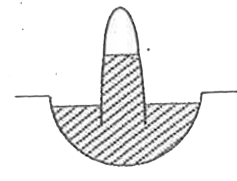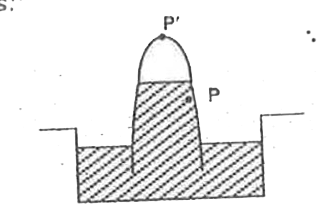About 1200 mL of air is always known to remain inside the human lungs it is described as
functional residual capactiy
residual volume
expiratory reserve volume
inspiratory reserve volume
The correct Answer is:B
To solve the question about the 1200 mL of air that remains inside the human lungs, we will analyze the options provided and understand the definitions of each term related to lung volumes.
1. Understanding the Question: The question states that about 1200 mL of air remains in the human lungs. We need to identify the term that describes this volume.
2. Reviewing the Options:
- Functional Residual Capacity (FRC): This is the volume of air remaining in the lungs after a normal expiration. It includes both the residual volume and the expiratory reserve volume. The range for FRC is typically between 1.7 to 3.5 liters.
- Residual Volume (RV): This is the volume of air that remains in the lungs after a forceful expiration. The typical value for residual volume is about 1200 mL.
- Expiratory Reserve Volume (ERV): This is the volume of air that can be forcibly exhaled after the end of a normal expiration. This volume is also around 1200 mL but is not the volume that remains in the lungs.
- Inspiratory Reserve Volume (IRV): This is the volume of air that can be forcibly inhaled after a normal inhalation. The typical value for inspiratory reserve volume is around 3000 mL.
3. Identifying the Correct Answer:
- Since the question specifically mentions that 1200 mL of air remains in the lungs, we look at the definitions. The residual volume (RV) is the air that remains after a forceful expiration and is specifically noted to be around 1200 mL.
- Functional residual capacity includes residual volume but is not limited to it. Expiratory reserve volume is the amount of air that can be exhaled but does not represent what remains in the lungs after expiration.
4. Conclusion: Based on the definitions and the specific volume mentioned in the question, the correct answer is Residual Volume (RV).
Final Answer:
Residual Volume (RV)
---
- Functional Residual Capacity (FRC): This is the volume of air remaining in the lungs after a normal expiration. It includes both the residual volume and the expiratory reserve volume. The range for FRC is typically between 1.7 to 3.5 liters.
- Residual Volume (RV): This is the volume of air that remains in the lungs after a forceful expiration. The typical value for residual volume is about 1200 mL.
- Expiratory Reserve Volume (ERV): This is the volume of air that can be forcibly exhaled after the end of a normal expiration. This volume is also around 1200 mL but is not the volume that remains in the lungs.
- Inspiratory Reserve Volume (IRV): This is the volume of air that can be forcibly inhaled after a normal inhalation. The typical value for inspiratory reserve volume is around 3000 mL.
- Since the question specifically mentions that 1200 mL of air remains in the lungs, we look at the definitions. The residual volume (RV) is the air that remains after a forceful expiration and is specifically noted to be around 1200 mL.
- Functional residual capacity includes residual volume but is not limited to it. Expiratory reserve volume is the amount of air that can be exhaled but does not represent what remains in the lungs after expiration.
Residual Volume (RV)
Topper's Solved these Questions
Similar Questions
when 1200 ml air is left in the lungs , it is called
View SolutionAbout 1500 ml of air left in lungs is called
View SolutionLungs do not collapse between breaths and some air always remains in the lungs which can never be expelled because
View SolutionIn humans,volume of air that remains in the lungs after a normal expiration is
View SolutionVolume of air that will remain in the lungs after normal expiration is equal to
View SolutionThe volume of air in the dead space fo human lungs is normally
View SolutionAmount of water present inside human body cells is about
View SolutionThe half life of radium is about 1200 years.if hundred gram of radium is existing now than 25g will remain undecayed after
View SolutionGauss's law and Coulomb's law , although expressed in different forms , are equivalent ways of describing the relation between charge and electric field in static conditions . Gauss's law is ε0ϕ=qencl,when q(encl) is the net charge inside an imaginary closed surface called Gaussian surface. The two equations hold only when the net charge is in vaccum or air .
If the charge q3 and q4 are displaced (always remaining outside the Gaussian surface), then consider the following two statements :
A: Electric field at each point on the Gaussian surface will remain same .
B: The value of ∮→E.d→A for the Gaussian surface will remain same.
View SolutionTorricelli was the first do devise an experiment for measuring atmospheric pressure . He took calibrated hard glass tube , 1 m in lengt and of uniform cross section , closed at one end . He filled the whole tube with dry mercury taking care than no air or water droplets remain inside the tube , closed the opposite end of the tube tightly with thumb and inverted it . He put this inverted mercury tube into a mercury through , taking care that the end of the tube remains inside the mercury through , An interesting thing was noticed . Mercury in the tube fell down at first and then stopped at a particular position . The height was 76 cm above the free surface of mercury in the through . When the given tube was inclined or lowered in the mercury trough , the vertical haight of mercury level in the tube was always found constant .
Torricelli explained this by saying that the free surface of mrcury in the trough . Hence , the hydrostatic pressure exerted by the trough measures the atmospheric pressure .

If a small hole is made at point P in the barometer tube , then

View Solution
